Hitoshi Shimizu
Evacuation Shelter Scheduling Problem
Nov 26, 2021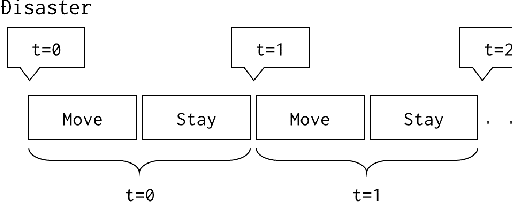
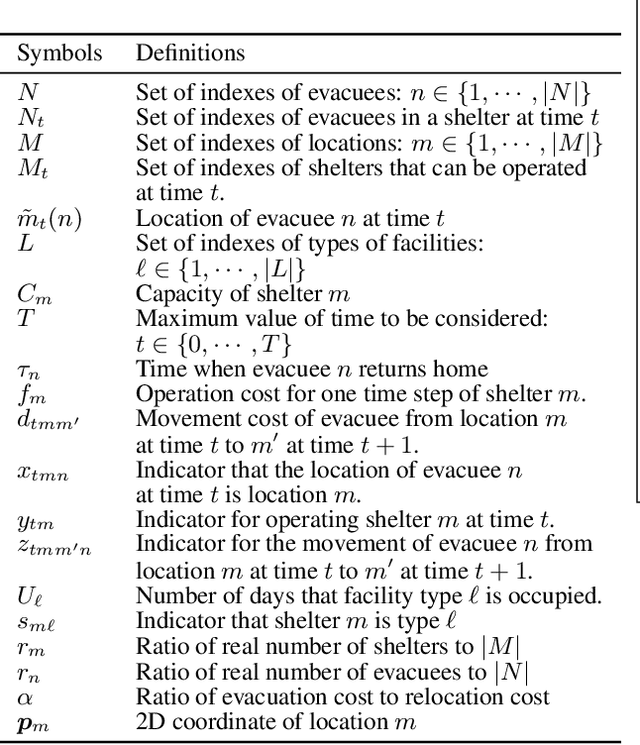
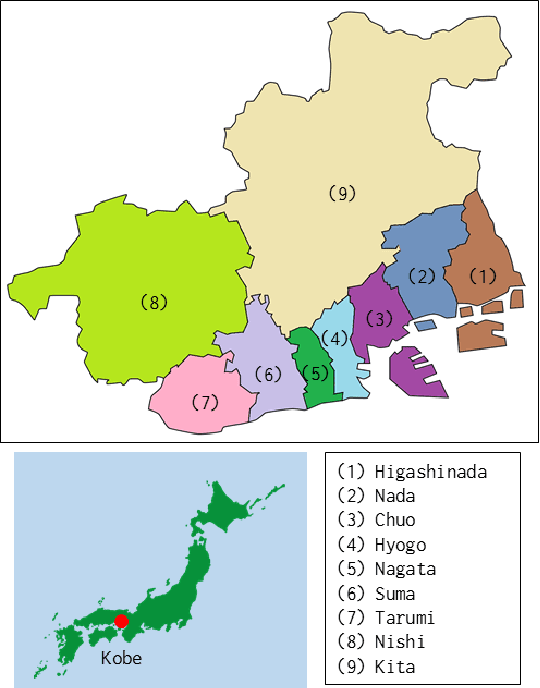
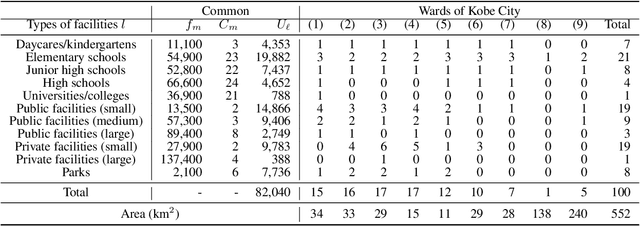
Abstract:Evacuation shelters, which are urgently required during natural disasters, are designed to minimize the burden of evacuation on human survivors. However, the larger the scale of the disaster, the more costly it becomes to operate shelters. When the number of evacuees decreases, the operation costs can be reduced by moving the remaining evacuees to other shelters and closing shelters as quickly as possible. On the other hand, relocation between shelters imposes a huge emotional burden on evacuees. In this study, we formulate the "Evacuation Shelter Scheduling Problem," which allocates evacuees to shelters in such a way to minimize the movement costs of the evacuees and the operation costs of the shelters. Since it is difficult to solve this quadratic programming problem directly, we show its transformation into a 0-1 integer programming problem. In addition, such a formulation struggles to calculate the burden of relocating them from historical data because no payments are actually made. To solve this issue, we propose a method that estimates movement costs based on the numbers of evacuees and shelters during an actual disaster. Simulation experiments with records from the Kobe earthquake (Great Hanshin-Awaji Earthquake) showed that our proposed method reduced operation costs by 33.7 million dollars: 32%.
Finding Appropriate Traffic Regulations via Graph Convolutional Networks
Oct 23, 2018
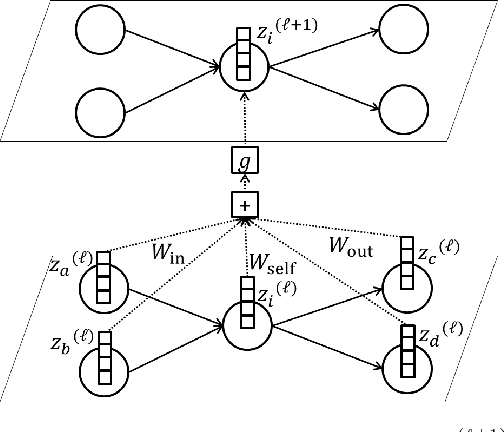

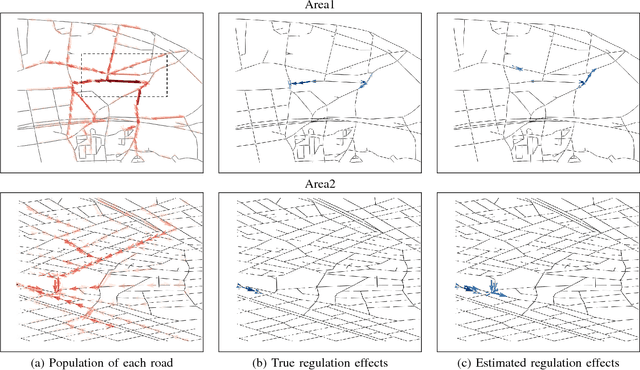
Abstract:Appropriate traffic regulations, e.g. planned road closure, are important in congested events. Crowd simulators have been used to find appropriate regulations by simulating multiple scenarios with different regulations. However, this approach requires multiple simulation runs, which are time-consuming. In this paper, we propose a method to learn a function that outputs regulation effects given the current traffic situation as inputs. If the function is learned using the training data of many simulation runs in advance, we can obtain an appropriate regulation efficiently by bypassing simulations for the current situation. We use the graph convolutional networks for modeling the function, which enable us to find regulations even for unseen areas. With the proposed method, we construct a graph for each area, where a node represents a road, and an edge represents the road connection. By running crowd simulations with various regulations on various areas, we generate traffic situations and regulation effects. The graph convolutional networks are trained to output the regulation effects given the graph with the traffic situation information as inputs. With experiments using real-world road networks and a crowd simulator, we demonstrate that the proposed method can find a road to close that reduces the average time needed to reach the destination.
 Add to Chrome
Add to Chrome Add to Firefox
Add to Firefox Add to Edge
Add to Edge